This is a really hard topic for me to write about, because exercise addiction is something I’ve struggled with for over ten years. Whether I’ve been a healthy weight or underweight, addicted to walking up and down the stairs, or doing an hour of walking or six hours, I have never fully managed to control my exercise. And note that by ‘control’ I mean me being in control – having a healthy relationship with exercise in which I am able to say no to walking if it’s cold or raining or if I am busy. Not my head, whether that’s my eating disorder, my autism and anxiety around routine and doing what’s right/wrong, or my OCD and rituals, that is in control. This feels like a very big topic, so I will try to break it down.
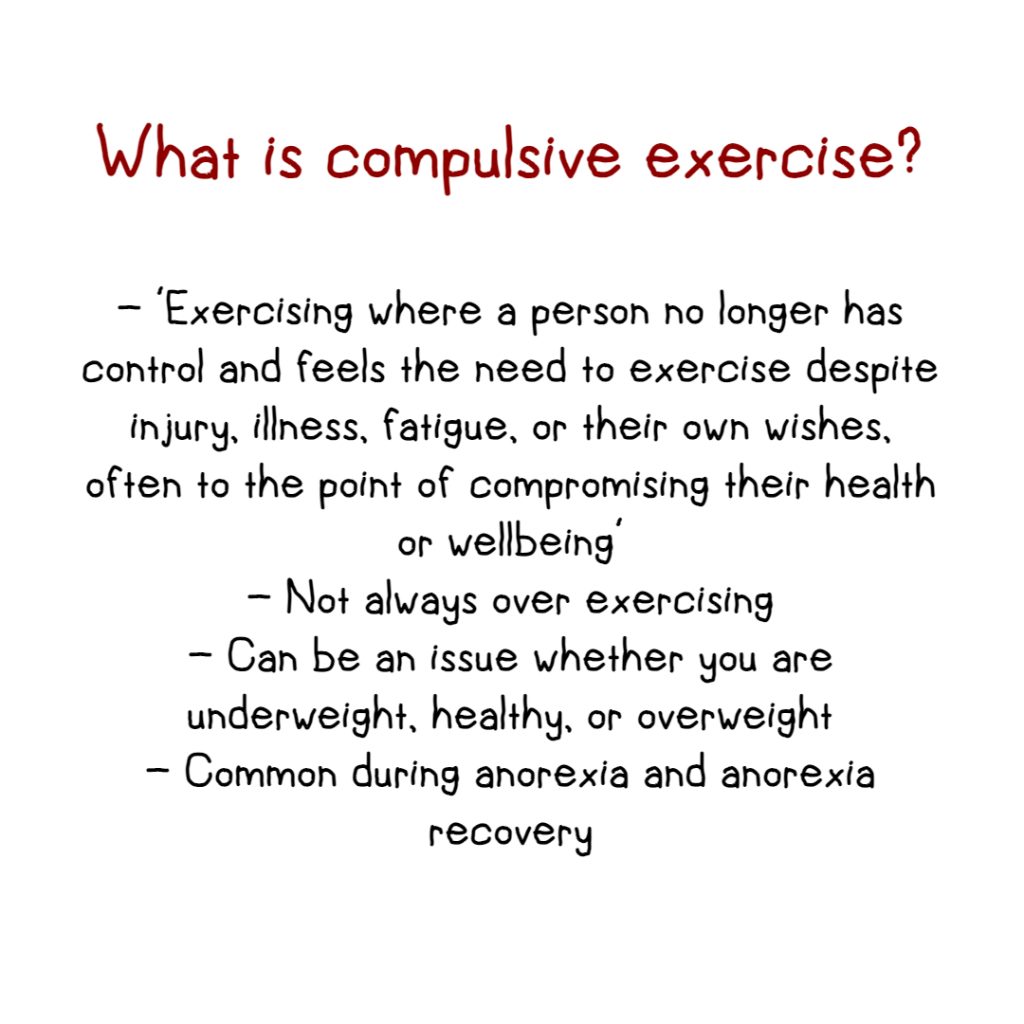
What is compulsive exercise, and what fuels my compulsions?
Compulsive exercise can be defined as exercising where a person no longer has control and feels the need to exercise despite injury, illness, fatigue, or their own wishes, often to the point of compromising their health or wellbeing. It’s easy to think of this as always being a ‘crazy’ amount of walking – i.e. it’s only compulsive if it’s hours and hours of steps a day, or going to the gym multiple times. But compulsive exercise can also be feeling the need to exercise even if it’s just meeting a so-called ‘healthy’ guideline amount. At no point should you feel you HAVE to exercise. And it’s not always easy to know whether or not it’s making you happy or whether doing it is just appeasing the anxiety of not. But if it makes you feel uncomfortable or guilty to not exercise, or makes you feel like you should compensate somehow – it’s probably become compulsive. You can absolutely struggle with compulsive exercise and be a healthy weight, or be overweight. It’s not something restricted only to people who are underweight. However, it does in particular present a huge barrier in regaining weight in people who need to gain weight, such as those in anorexia recovery.
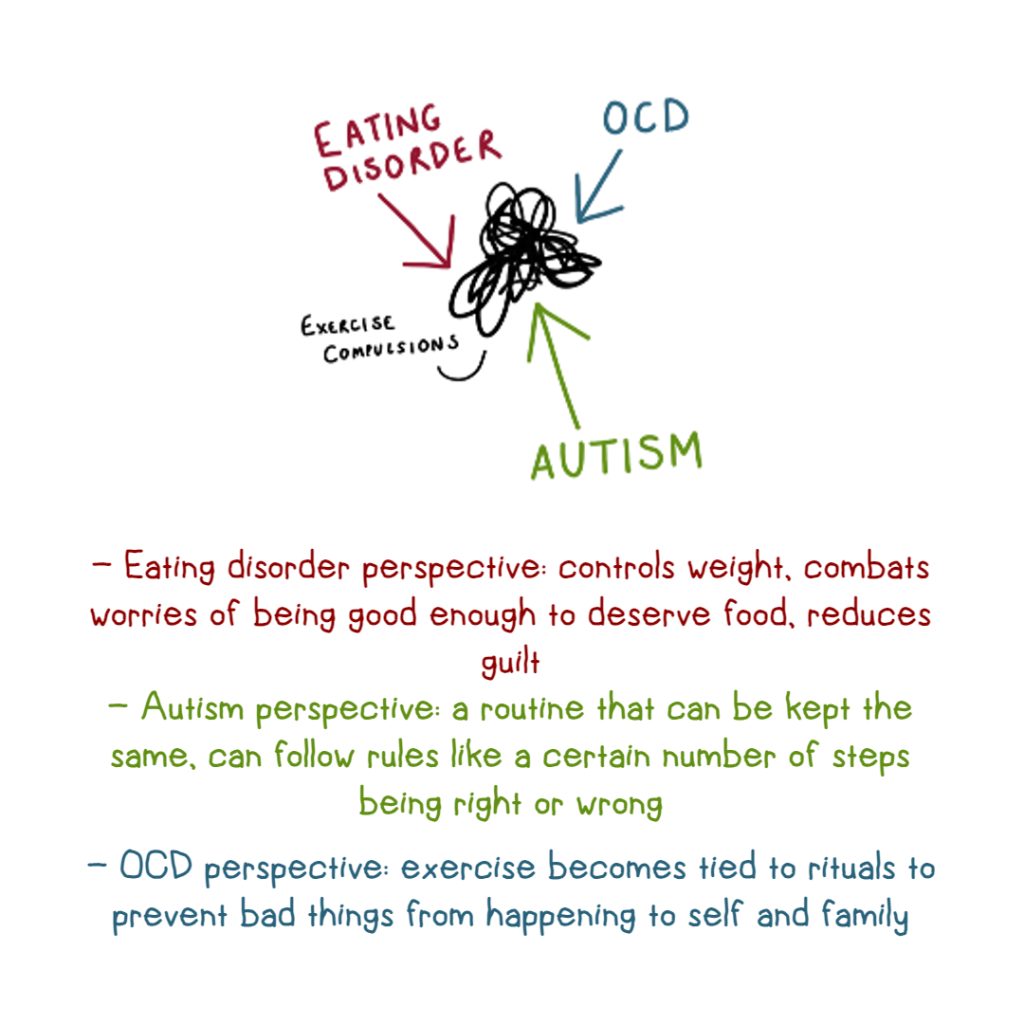
For me, several things have fuelled my compulsion to exercise. From an eating disorder perspective, exercising controls my weight, and makes me feel ‘good enough’ and like I’ve worked hard enough, to ‘be allowed’ to eat and enjoy food. Even if I’m not ‘burning off calories’, it reduces the guilt I feel.
From an autism perspective, I like to keep things the same, and unfortunately I get used to walking a certain amount, and then feel like I can’t change it, no matter the weather, or my weight. But there is a strange beauty in the fact that life is not always the same. Things change, there is an ebb and flow, and there is something wonderful about listening to the world around you, and your body. Being in tune with…I guess life. When you need to gain weight, or when it’s cold, or when life gets busier (e.g. you start working), exercise might nee reduce, or stop. I had a friend who described how they liked to gain a little weight over the cold months of the year: they called it ‘putting on a winter coat’. Kind of like animals do! I kind of like that. Moreover, when you get older, there just is less time for exercise. Life can’t always be the same, because you aren’t the same. As someone who is autistic, I find that hard to accept, but I need to!
In addition, being autistic, I find myself constantly seeking answers to what is right or wrong in life…and unfortunately, that has led me to take on ideas that aren’t necessarily true, like needing to walk 10000 steps to be ‘healthy’, quite literally. I view myself as good or bad depending on silly rules like this, when many of these are actually not evidenced, and certainly aren’t applicable to every individual.
Finally, from an OCD perspective, some of my exercise has become tied to rituals like walking to certain lampposts or circling certain buildings, believing that if I do these things I will prevent bad things from happening to myself and my family.
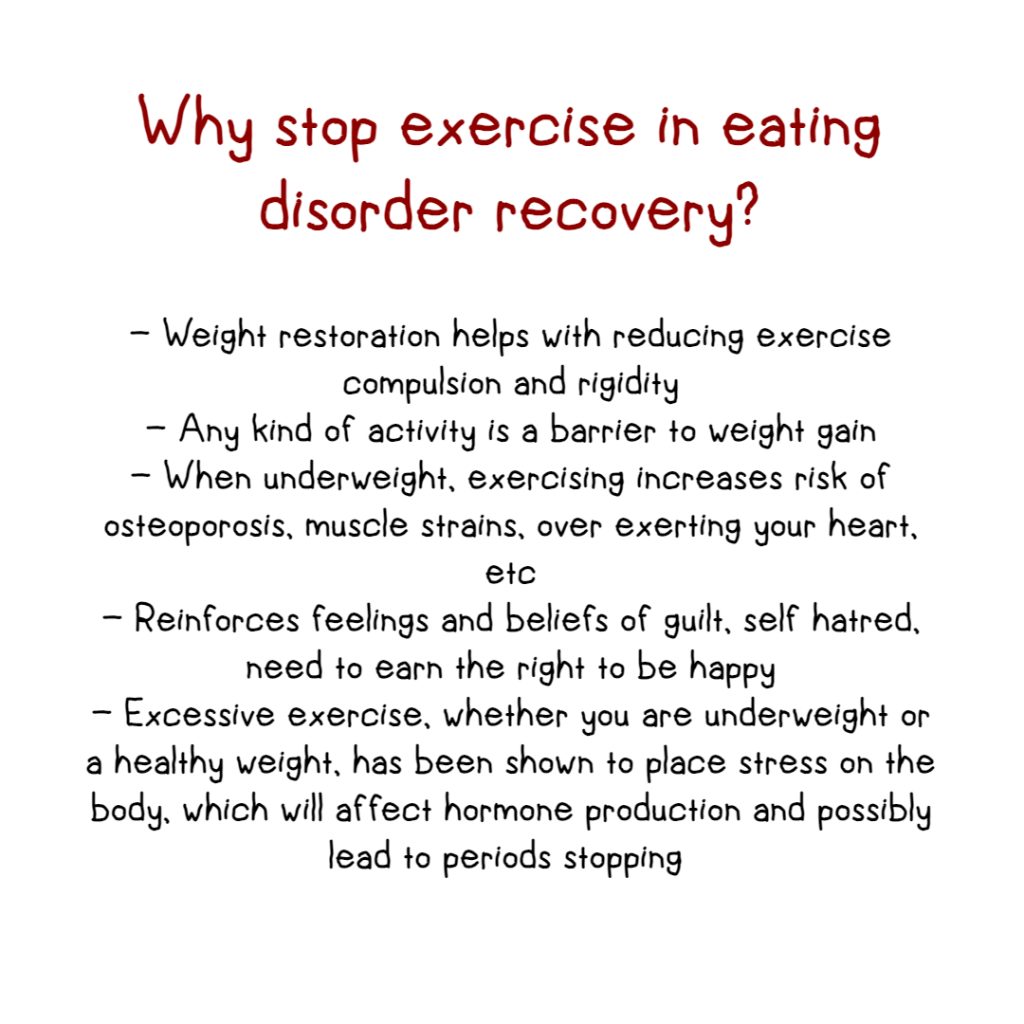
Why is compulsive exercise an issue in recovery from an eating disorder, and in gaining control of your life?
For several reasons, compulsive exercise is problematic for people recovering from recovery from an eating disorder:
- It has been proven that weight restoration actually helps with reducing the compulsion to exercise, and with rigid behaviour in general, because when you are underweight, your brain cannot function properly
- Any kind of activity will mean an individual needs to eat even more food to gain weight
- When underweight, by exercising you are risking osteoporosis, fractures, muscle strains, over exerting your heart, etc
- Continuing to follow the compulsion will only reinforce feelings and beliefs of guilt, self-hatred, and need for self-punishment or to earn the right to eat, or be happy
- Excessive exercise, whether you are underweight or a healthy weight, has been shown to place stress on the body, which will affect hormone production and possibly lead to periods stopping (this is alongside the possibility of one’s low weight also causing periods to stop) – not having periods has a range of health consequences, including osteoporosis (so while strength exercise can improve the symptoms of osteoporosis, compulsive exercise will actually prevent periods from returning, which would be the best way of increasing bone density and treating/preventing osteoporosis)
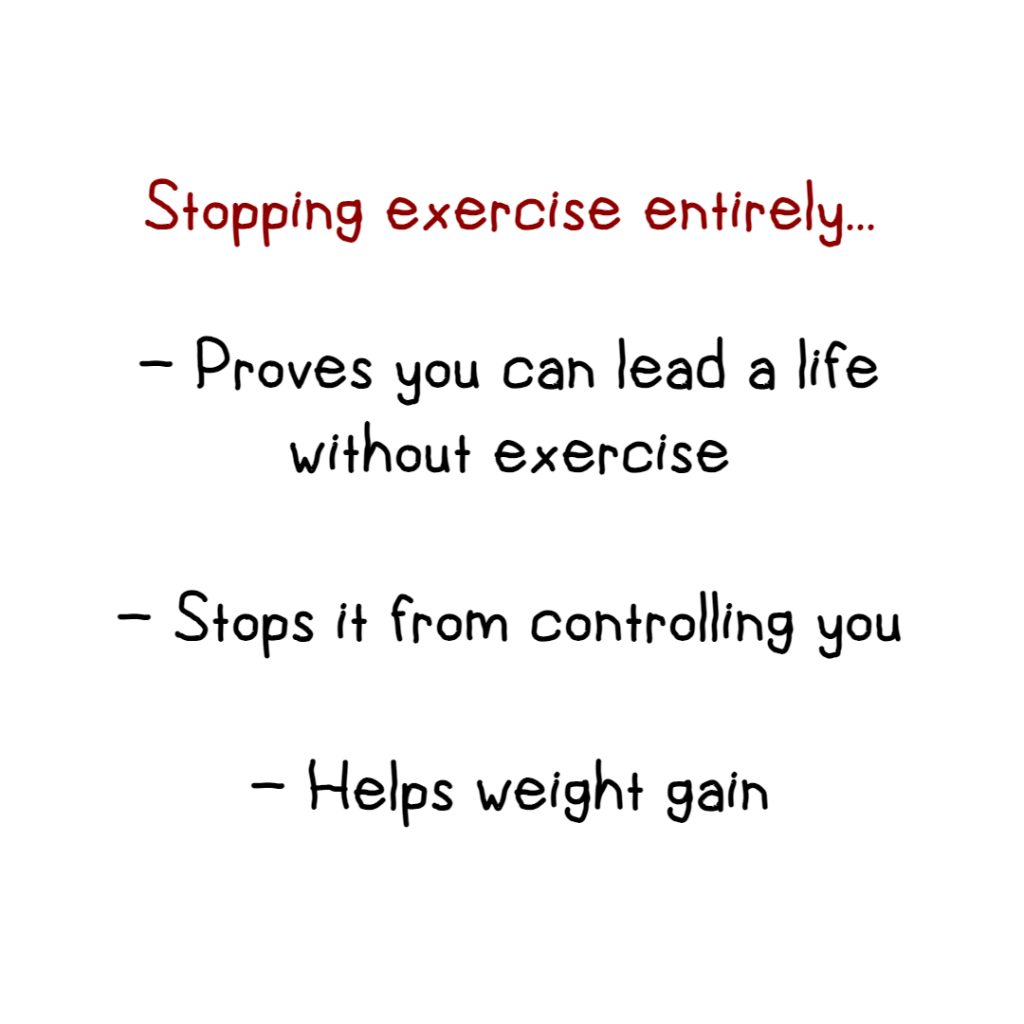
What would I recommend?
Honestly? From what I’ve read, if you’re in any kind of eating disorder recovery, or addiction to compulsive exercise, the only way to really overcome it is to go ‘cold turkey’ and stop all exercise completely. You have to prove to yourself that you can lead a life without exercise, in order to feel free from it and to stop it from controlling you. And, when you are underweight, exercise will make it harder to physically restore weight, and can have severe health consequences.
Studies exploring the benefits of exercise in eating disorder recovery have been carried out, assessing the benefits of movement for wellbeing, but these still suggest that, until you are very close to a healthy weight, this ‘movement’ should consist of light stretching. When I have been in hospital, a lot of the time I have been on bed rest at BMIs under 13, and chair rest until BMI 15. Even then, in some hospitals, ‘exercise’ was not daily (I will say in some units however it was daily – it consisted of a group daily or twice-daily 15 minute walk, depending on your weight and progress, once you reached this BMI, and once you were weight restored).
I am not a doctor, so my advice is based solely on my own experiences from my own admissions, and from what I have read in research papers, blogs, and the websites of health organisations.
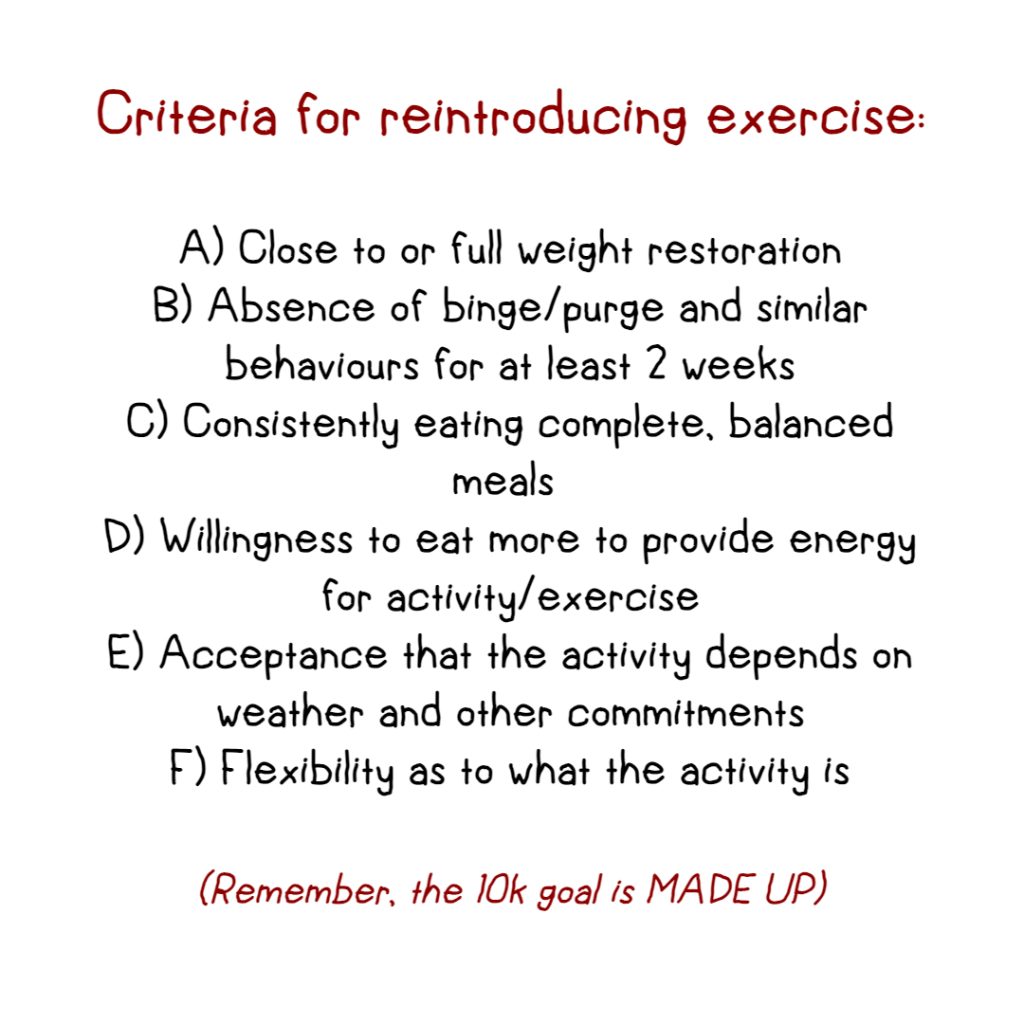
I saw a set of ‘criteria’ for reintroducing exercise, and I think this sounds like a healthy set of ‘requirements’ to do so:
A) Close to or full weight restoration
B) Absence of binge/purge and similar behaviours for at least 2 weeks
C) Consistently eating complete, balanced meals
D) Willingness to eat more to provide energy for activity/exercise
For me, I would also add a further criteria – E) Acceptance that the activity depends on weather and other commitments, and also
F) Flexibility as to what the activity is.
I would also add that what I DON’T recommend is listening too much to the ‘10000 steps a day’ myth. This was taken from a marketing campaign for pedometers, and any studies investigating recommended steps for health actually recommend far fewer steps. It’s kind of impossible for any study to say that ‘x number of steps = healthy’, because what it means to be a healthy is…so wide ranging and individual. BUT studies have found that specific numbers of steps can have specific health benefits, e.g. reducing risk of heart disease. Still, these studies recommend much less than 10000 steps to experience the benefits of activity, and also acknowledge that for most people, doing such a high number of steps wouldn’t fit with working, looking after a family, having other hobbies, and I guess just general, daily life!
I plan to follow this up with some things to keep in mind to help deal with the anxiety and stress of working on exercise compulsions, but I hope it has helped to read my thoughts on it all!
Resources used:
https://blog.drsarahravin.com/eating-disorders/exercise-caution-physical-activity-and-eating-disorder-recovery/
https://www.naturally-nina.com/recovery/2018/5/31/exercise-in-eating-disorder-recovery
https://health.gov/sites/default/files/2019-09/Physical_Activity_Guidelines_2nd_edition.pdf
https://www.benenden.co.uk/be-healthy/lifestyle/how-many-steps-should-i-do-per-day/
https://www.health.com/how-many-steps-a-day-health-benefits-7375335
https://jeatdisord.biomedcentral.com/articles/10.1186/s40337-018-0219-x
https://www.frontiersin.org/articles/10.3389/fpsyg.2019.02370/full
https://tabithafarrar.com/2017/05/exercise-anorexia-case-cold-turkey/
https://static1.squarespace.com/static/5b6112bd365f028c9256b26d/t/5d1447cd6fdb9400017b5240/1561610213659/SEES+full+guideline+-+2019+JUNE+copy.pdf
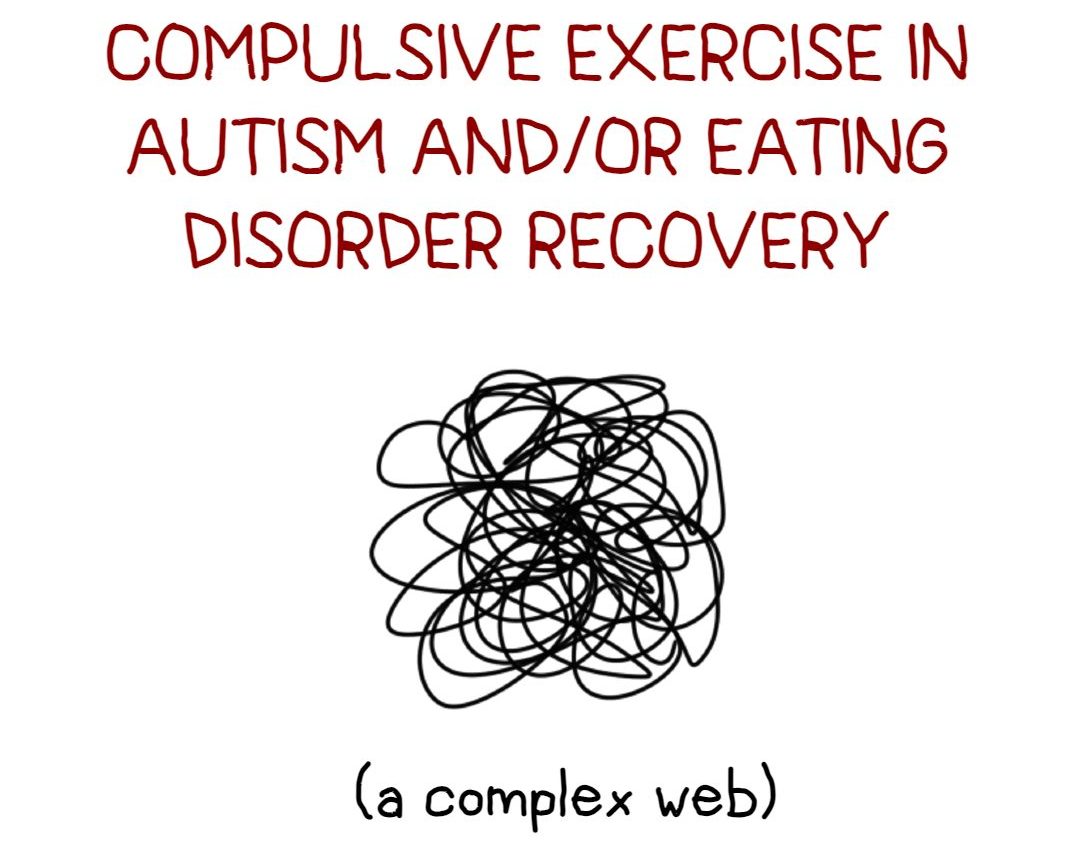
Leave a Reply